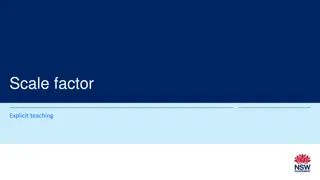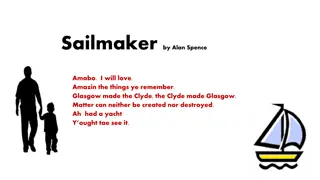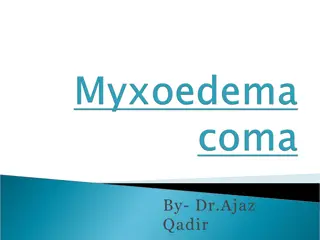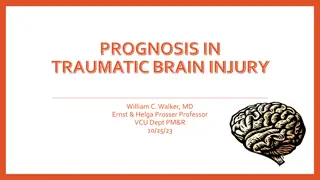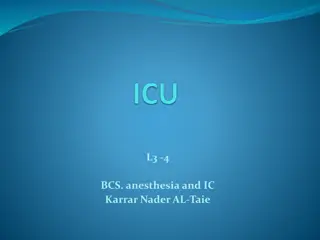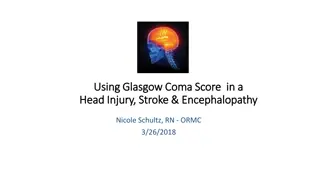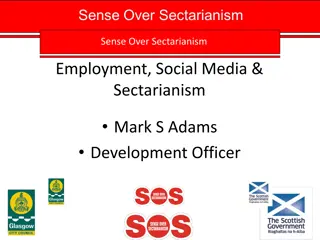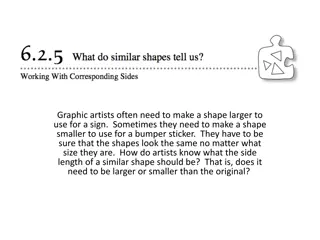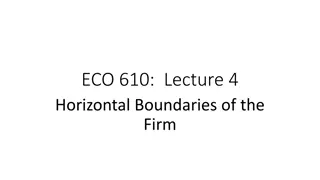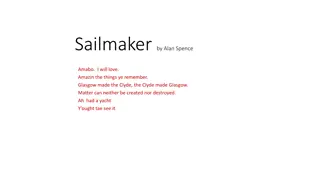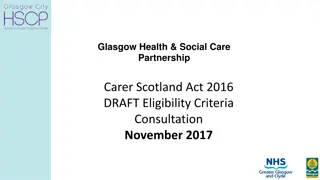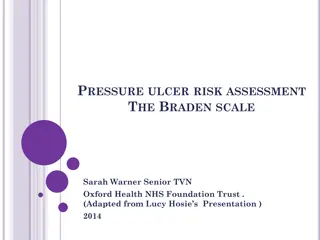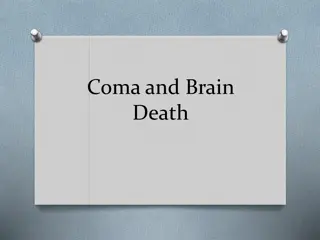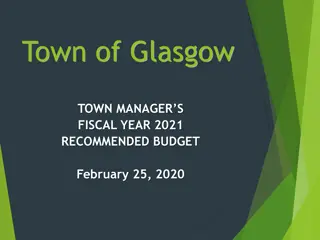Understanding the Glasgow Coma Scale (GCS) in Healthcare
The Glasgow Coma Scale (GCS) is a critical tool for assessing the level of consciousness in patients, commonly used in head trauma cases but applicable across various medical settings. The GCS evaluates eye opening, verbal response, and motor responsiveness, assigning scores to each aspect to determine the patient's level of consciousness. Regular monitoring of GCS scores enables healthcare professionals to detect early signs of patient deterioration and provide appropriate care promptly.
Download Presentation

Please find below an Image/Link to download the presentation.
The content on the website is provided AS IS for your information and personal use only. It may not be sold, licensed, or shared on other websites without obtaining consent from the author. Download presentation by click this link. If you encounter any issues during the download, it is possible that the publisher has removed the file from their server.
E N D
Presentation Transcript
L4 Anesthesia Technologist BCS. Anesthesia. and IC diploma. Community health Karrar Nader AL-Taie Anesthesia Technologist BCS. Anesthesia. and IC diploma. Community health Muneer Salman Hasan
Glasgow Coma Scale GCS The Glasgow Coma Scale (GCS) allows healthcare professionals to consistently evaluate the level of consciousness of a patient. It is commonly used in the context of head trauma, but it is also useful in a wide variety of other non-trauma related settings. Regular assessment of a patient s GCS can identify early signs of deterioration. There are three aspects of behavior that are independently measured as part of an assessment of a patient s GCS motor responsiveness, verbal performance and eye-opening. The highest possible score is 15 (fully conscious) and the lowest possible score is 3 (coma or dead)
Glasgow Coma Scale The assessment is carried out in three stages (4 points( (5 points) 1- Eye Opening Response 2-Verbal Response 3-Motor Response (6 points)
Eye Opening Response 1-Spontaneous--open with blinking at baseline = 4 points 2-To verbal stimuli, command, speech = 3 points 3-To pain only (not applied to face) = 2 points 4-No response = 1 poin
Verbal Response 1- Oriented = 5 points 2-Confused conversation, but able to answer questions = 4 points 3-Inappropriate words = 3 points 4-Incomprehensible speech = 2 points 5-No response = 1 point
Motor Response Obeys commands for movement = 6 points Purposeful movement to painful stimulus= 5 points Withdraws in response to pain = 4 points Flexion in response to pain (decorticate posturing)= 3 points Extension response in response to pain (decerebrate posturing) =2 points No response = 1 point
GCS 15 [E4, V5, M6] GCS [E..,V..,M..]
EX./What is the patients score based on these findings: when you arrive to the patient s bedside the patient s eyes are closed but they open when you speak to the patient . and Confused conversation, but able to answer questions, Purposeful movement to painful stimulus? Answer/ GCS [E .,V ..,M ..]
EX./ What is the patients score based on these findings: when you arrive to the patient s bedside the patient s eyes open To pain only .and Inappropriate words and Extension response in response to pain ? Answer/ GCS [E .,V ..,M ..]
EX./ What Glasgow Coma Scale score usually requires intubation because the airway reflexes are affected? A. 10 or less B. 9 or greater C. 8 or less D. 10 or greater
Assignment when you arrive to the patient s bedside the patient s eyes are closed, but they open when you speak to the patient, the patient doesn t respond appropriately to questions asked and says words that don t make sense. the patient can t obey a motor command. when you apply a central stimulus the patient moves to locate and remove the stimulus.? A. GCS 12 (E3 V4 M5) B. GCS 8 (E2 V4 M2) C. GCS 11 (E3 V3 M5) D. GCS 10 (E3 V3 M4)


